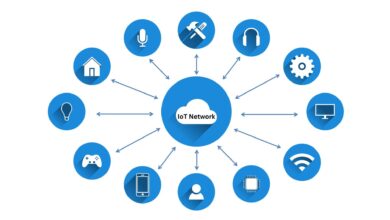The Top 6 Ed Tech Tools to Enhance Learning in 2024

Educational technology continues to evolve rapidly, providing new and innovative ways for teachers to engage students both inside and outside the classroom. As we enter 2024, there are some exciting ed tech tools that teachers should consider incorporating into their classrooms and lesson plans.
Introduction
The use of technology in education provides many benefits for both students and teachers. Ed tech tools can make learning more interactive, personalized, and accessible. They can also help streamline administrative tasks, encourage collaboration, and provide instant feedback and assessment.
With so many ed tech tools available, it can be difficult for teachers to identify which ones to adopt. Here we will explore six of the most useful ed tech tools to try out in 2024.
6 Top Ed Tech Tools for 2024
1. Virtual Reality (VR)

Virtual reality immerses students in a fully digital environment and allows them to interact with simulated 3D worlds. VR headsets like the Oculus Rift transport students anywhere imaginable – from outer space to inside the human body. VR technology is ideal for experiential learning as it provides opportunities for students to visit new places, role play different scenarios, and interact with objects in ways not possible in the classroom. VR lessons and activities can be designed for any subject, making abstract concepts more concrete for students.
2. Artificial Intelligence (AI)
AI in education refers to software that can simulate human-like capabilities such as speech recognition, natural language processing, machine learning, and emotion recognition. AI tutoring systems like Carnegie Learning leverage data to provide personalized instruction and feedback for each student. AI virtual assistants can answer student questions in real-time. Teachers can also use AI to automate grading and provide recommendations for extra help or enrichment activities. AI has the power to transform assessment and lower the administrative workload for educators.
3. Augmented Reality (AR)
Unlike VR which is completely virtual, AR overlays digital elements onto the physical classroom. With AR apps like Element4D, students can manipulate 3D images projected at their desks. Other AR tools turn worksheets into interactive games and activities. By blending the real world with virtual objects, AR helps grasp complex topics and ignite student imagination. AR also facilitates self-paced and hands-on learning while keeping students engaged.
4. Coding Tools
Coding teaches critical thinking, creativity, and digital literacy skills that students need to thrive in the 21st century. Coding tools allow students to gain programming experience through game-based learning. Options like Tynker, Scratch and CodeMonkey use intuitive block interfaces so students can easily create games and applications. Students also learn core principles of computer science like sequencing, loops and conditionals. Coding tools make programming fun and accessible for K-12 learners.
5. Wearable Technology
Also known as “wearables”, these smart devices integrate computing power into everyday objects like watches, belts and gloves. When used in education, wearables can track student location and vitals like heart rate. The data provides insights into student health, attendance, and levels of engagement during lessons. Teachers can leverage this real-time analytics to better understand their students and tailor instruction accordingly. Wearable tech also has applications for special needs students.
6. Digital Portfolios
Digital portfolios provide an alternative to traditional assignment notebooks and folders. Students can upload their classwork into e-portfolios that follow their academic journey year after year. Platforms like Seesaw and FreshGrade make it easy to collect and organize student creations in one place. Digital portfolios also promote student reflection, letting them look back on progress over time. Parents can be granted access to view their child’s work throughout the semester or school year.
Conclusion
Implementing any new technology requires planning, training and ongoing support. The key is to start small with tools that align to curriculum goals and complement your teaching style. While results won’t be immediate, incorporating purposeful ed tech tools will create more meaningful learning experiences for students. Teachers must remain flexible and willing to experiment with these innovative tools.
2022 was an exciting year for edtech, and 2023 promises to bring powerful new innovations. The six tools highlighted in this article represent some of the top trends to keep on your radar as we begin the new year. Which of these tools could take your classroom to the next level?
FAQs About Ed Tech Tools
What are the benefits of using ed tech tools?
Ed tech tools provide many benefits for students and teachers. They can increase student engagement, facilitate personalized learning, simplify administrative tasks, encourage collaboration, provide instant assessment and feedback, and give access to more educational resources.
How do I choose the right ed tech tools?
When evaluating ed tech tools, consider your specific curriculum goals, students’ needs, ease of use, reliability, and affordability. Select tools that enhance your existing teaching methods. Also involve students in the process by getting their input on potential tools.
What ed tech skills should teachers develop?
To leverage ed tech tools effectively, teachers need to be comfortable with basic technology operations, troubleshooting typical issues, managing student accounts and progress, aggregating data, and participating in online communities. Ongoing professional development is key.
How can ed tech tools support remote learning?
Ed tech tools that foster communication, collaboration, assessment, and engagement are especially valuable for remote learning. Teachers can use tools like VR for virtual field trips, digital portfolios to collect student work, and AI chatbots to provide instant feedback.
What ed tech trends will shape the future of education?
Some emerging ed tech trends include augmented reality, artificial intelligence, 3D printing, social emotional learning tools, data analytics, and personalized adaptive learning. These innovations will make learning more customized, interactive, and accessible for all students.
When should I introduce ed tech tools to students?
Students are generally very quick to pick up new technology. Elementary school is a good time to familiarize them with ed tech tools for creativity, collaboration, and digital literacy. Start with user-friendly tools that complement course objectives and provide sufficient guidance.
Try These Top Ed Tech Tools in 2024
Technology will continue disrupting education in exciting new ways. As an educator, you owe it to your students to explore the potential of emerging ed tech tools. Choose tools strategically, start small, and remain open to new methods that can enrich learning outcomes in your classroom. Investing in the right educational technology today will help prepare students for the high-tech world of tomorrow.




